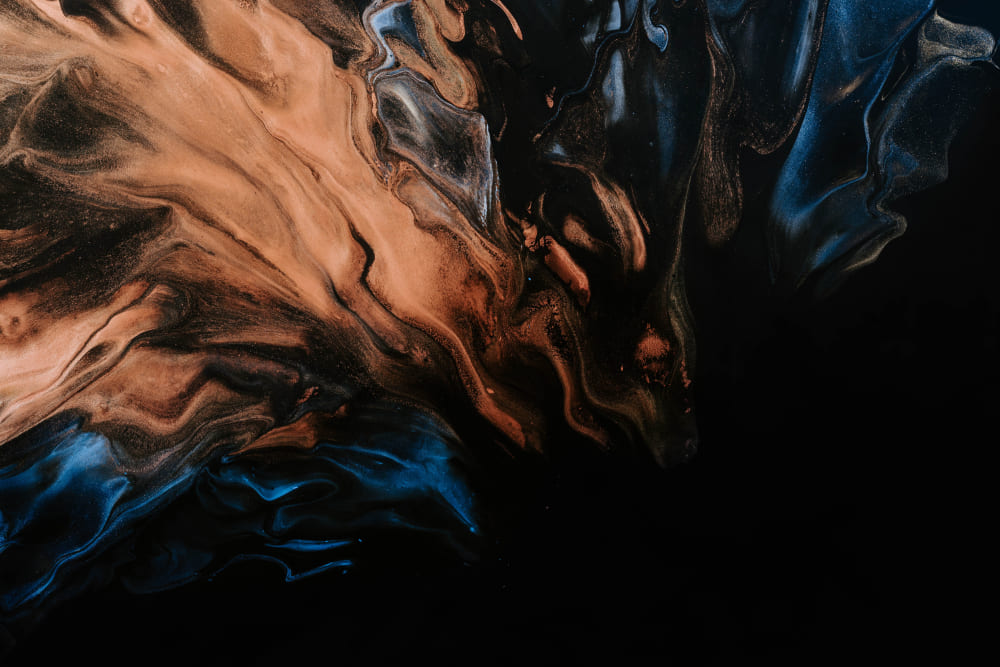What Colors Make Black: A Comprehensive Guide to Color Mixing
Have you ever wondered how black is created? Did you know that black is not technically a color, but rather the absence of light or color?
By the end of this article, you will have a deeper understanding of the role that black plays in color theory, how to create it using different color combinations, and how it can be used to create powerful designs.
So, join us on this fascinating journey to explore what colors make black and unlock the full potential of color in your designs.

In this article, you will learn:
- Black in Color Theory
- What Colors Make Black?
- How to Mix Black Paint: A Step-by-Step Guide
- Final Thoughts About What Colors Make Black
Black in Color Theory
Color theory is the study of how colors interact with each other. It provides a framework for understanding the relationships between different colors and how they can be used to create different moods and effects.
At its most basic level, color theory is based on the color wheel, which groups colors into primary, secondary, and tertiary colors.
By understanding the properties of these different colors and how they interact, we can create harmonious and visually appealing designs.
Further Reading:
Black is a color that is often overlooked in discussions of color theory, but it plays a crucial role in the way we perceive color.
Black is not technically a color, but rather the absence of light or color. It can be used to create contrast, enhance other colors, and convey a sense of sophistication and elegance.
Further Reading:
Watch the following YouTube video (made by Cinder Block Studios) to learn about black and white in color theory.
What Colors Make Black?
Primary colors, secondary colors, and tertiary colors can all contribute to the creation of black when mixed in specific ways. Here is a list of how these colors can be combined to create black:
- Primary colors: When the three primary colors (red, blue, and yellow) are mixed together in equal amounts, they create a muddy brown color. However, if you keep adding small amounts of each primary color until the mixture becomes very dark, it will eventually appear black.
- Secondary colors: Secondary colors are created by mixing two primary colors together. When the three secondary colors (orange, green, and purple) are mixed together in equal amounts, they create a dark brown color. However, if you keep adding small amounts of each secondary color until the mixture becomes very dark, it will eventually appear black.
- Tertiary colors: Tertiary colors are created by mixing a primary color with a secondary color. When all six tertiary colors are mixed together in equal amounts, they create a dark gray color. However, if you keep adding small amounts of each tertiary color until the mixture becomes very dark, it will eventually appear black.
It's important to note that the colors used to create black will affect the resulting shade of black. For example, a black created using primary colors will have a slightly different hue than a black created using secondary or tertiary colors.
Additionally, the amount of each color used will affect the resulting shade of black. A mixture with more blue will create a cooler, bluish-black, while a mixture with more red will create a warmer, reddish-black.

How to Mix Black Paint: A Step-by-Step Guide
If you're someone who enjoys digital art, has a creative side, or is a photographer, practicing mixing black paint can help you better understand the meaning of tone and color grading. This can provide more possibilities to add depth and richness to your work.
Black is a color with profound depth, evoking a range of emotions and lending gravity to any artwork. While it's common to buy pre-made black paint, mixing your own offers a level of control over the hue and tonality that can't be matched by store-bought options.
This section will help you create the perfect black paint for your next masterpiece step-by-step.
Step 1: Understand the Color Theory
Before diving into the actual process of mixing black paint, it's essential to understand some basic color theory. Black, in the context of traditional color mixing, is not a color itself but the absence of light.
However, in painting, black is often treated as a color and can be created by mixing complementary colors. Complementary colors are pairs that, when combined, cancel each other out, resulting in shades of gray and black.
For example, red and green are complementary, as are blue and orange, and yellow and purple. Combining these pairs will result in different shades of gray or black.
Step 2: Choose Your Base Colors
To create a rich, complex black, you'll want to start with three primary colors: red, blue, and yellow. These are the basic colors from which all other colors are made, and they can be mixed in varying proportions to create a wide spectrum of hues, including black.
If you want to create a slightly warmer or cooler black, consider swapping one of your primary colors for a secondary color. For instance, you could use green instead of yellow for a cooler black, or orange instead of red for a warmer black.
Step 3: Start Mixing
Begin by mixing equal parts of your chosen colors. The exact proportions will depend on the specific paints you're using, as some may be more saturated or pigmented than others.
Add your colors to your mixing surface (a palette, a mixing tray, or even a disposable plate can work) and use a palette knife to blend them together. Mix until the colors are fully combined and you have a uniform shade.
Step 4: Adjust As Needed
Once you've mixed your base colors, examine the resulting shade. If it's not quite black, try adjusting the proportions of your base colors. You might need to add more of one color or introduce a bit of its complementary color to darken the shade.
Remember, it's easier to darken a color than to lighten it, so add new colors a little at a time and mix thoroughly after each addition.
Final Thoughts About What Colors Make Black
Here are a few core summaries:
- The primary colors of red, blue, and yellow can be mixed together to create black.
- Secondary and tertiary colors can also be combined in specific ways to create black.
- The specific colors used to create black will affect the resulting shade of black.
In this article, we cover what makes the color black. Color mixing is an essential aspect of design, photography, and other creative areas. Whether you are creating a logo, editing a photo, or designing a website, understanding how to mix colors effectively can help you create visually appealing and effective designs.
When it comes to adjusting colors in your designs or photos, tools like Photoshop and Lightroom are essential. These tools allow you to adjust the color balance, saturation, hue, and other parameters to achieve the desired effect.
However, constantly adjusting parameters using a mouse or keyboard can be time-consuming and imprecise, especially if you're working on a large project.

This is where TourBox can become a valuable assistant. TourBox is a compact and customizable controller designed specifically for creative professionals. It allows you to control various parameters in your favorite creative software using its knobs, wheels, and buttons.

With TourBox, you can adjust colors, change brush sizes, navigate timelines, and perform other tasks quickly and intuitively, without constantly switching between your mouse and keyboard.